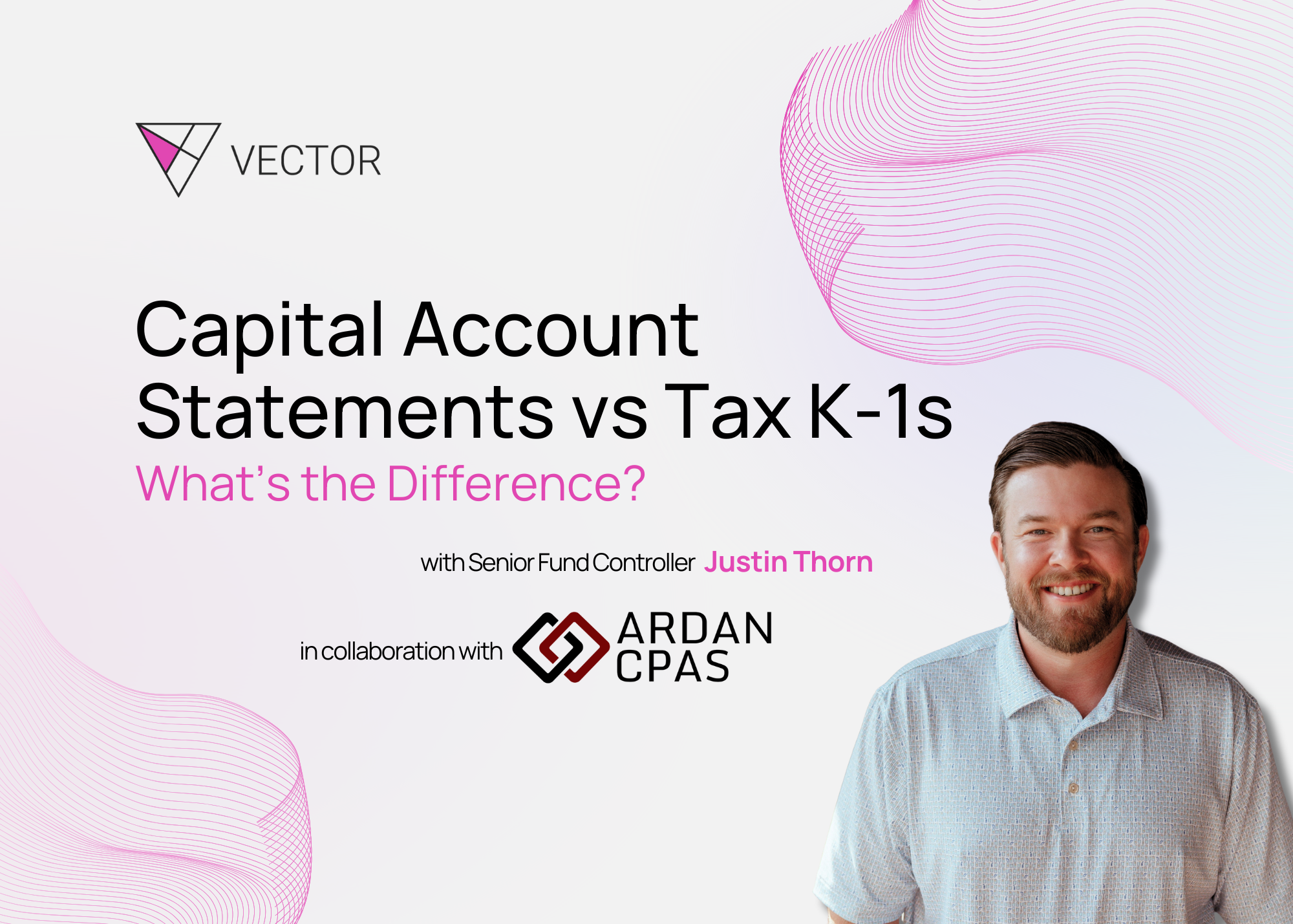
As we are finally beginning to close the door on 2024 from an accounting and reporting perspective, a lot of investors have become inundated with documents and portal notifications for their various investments. It is important to sort through these and ensure you are getting exactly what you need!
The two most important documents that impact all LPs are Capital Account Statements and Schedule K-1s. While they may look similar at first glance, both referencing your capital in the partnership. However, they serve very different purposes.
Understanding these differences is crucial for tracking your investment performance, preparing your taxes, and having meaningful conversations with your fund manager or accountant. We collaborated with Dan Brown of ARDAN CPAs to break down what's the difference, why I should care, and why it matters.
Capital Account Statements (PCAP or CAS) are primarily prepared using the GAAP (Generally Accepted Accounting Principles) method. However, some funds prefer to issue PCAPs using the tax basis method, which more closely aligns with the Schedule K-1s (more on this later).
For the funds using GAAP Capital Account Statements, they are designed to present a fair and consistent view of the financial condition and results of operations of the entity.
A GAAP capital account statements typically includes the following:
GAAP PCAP reflects fair market values of investments, including unrealized gains and losses, which are marked to market each reporting period. As a result, your capital account balance under GAAP shows your economic stake in the partnership, not just cash in and cash out, but also the impact of portfolio valuation changes.
PCAPs under GAAP tell Partners what the hypothetical value of their investment is as of the date on the statement.
By contrast, a Schedule K-1 is purely a tax document. It reports your share of the partnership’s income, deductions, credits, and other tax items for a given calendar year, as required by the IRS.
Key things the K-1 reflects:
Unlike GAAP, K-1s follow Internal Revenue Code rules, which often differ from GAAP in timing and treatment. For example:
So, while the K-1 is essential for your tax return, it does not necessarily reflect the economic value of your investment at year-end.
The two reports often diverge and that’s by design. Here’s why you should care:
Investors and managers should understand that GAAP and tax capital accounts are two sides of the same coin, each telling a different story. One speaks to the economic value of your investment, the other to the taxable consequences of your ownership.
If you're ever unsure which number to rely on in a particular context, whether it's a distribution, exit scenario, or fund performance, it's a good idea to ask your fund manager or accountant which capital account is being referenced.
Understanding these differences can empower you to make more informed investment and tax decisions.
Still confused about what your K-1 or PCAP is telling you? You’re not alone. Let us help you decode your investor reports so you can make smarter decisions. Let's chat.